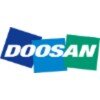Senior HSE Officer
30+ Senior HSE Officer Interview Questions and Answers

Asked in Metscco Heavy Steel Industries

Q. What is the minimum safe distance for mechanical excavation near underground electrical cables?
The minimum distance allowed for mechanical excavation near underground electrical cable is dependent on the voltage of the cable.
The minimum distance should be determined by a competent person
The voltage of the cable should be identified
The distance should be at least equal to the depth of the cable plus 500mm
If the voltage of the cable is higher, the distance should be greater
The excavation should be carried out carefully to avoid damaging the cable

Asked in Metscco Heavy Steel Industries

Q. The HSE manager informed you that the construction team has a lifting activity. Which documents will you ask for prior to starting the activity?
Prior to lifting activities, essential documents ensure safety and compliance in construction operations.
Lift Plan: A detailed plan outlining the lifting procedure, including equipment and personnel involved.
Risk Assessment: Identification of potential hazards associated with the lifting activity and mitigation measures.
Equipment Certification: Valid certificates for cranes and lifting equipment, ensuring they meet safety standards.
Personnel Competence: Proof of training and ...read more

Asked in Metscco Heavy Steel Industries

Q. What is the minimum height at which a safety harness is required?
The required minimum height to use safety harness is 6 feet or higher.
The minimum height requirement for safety harness varies depending on the industry and jurisdiction.
In general, the minimum height requirement is 6 feet or higher.
This is to ensure that workers are protected from falls and other hazards.
Employers should always follow the guidelines set by their industry and jurisdiction to ensure worker safety.

Asked in Parijat Industries (India)

Q. What is the category of hazardous waste for ETP sludge, used oil, industrial garbage, biomedical waste, plastic waste, and e-waste?
The category of hazards waste for ETP sludge, Used Oil, industry Garbage, Biomedical Waste, Plastic waste, and e-waste is classified as hazardous waste.
ETP sludge is classified as hazardous waste due to its toxic components and potential environmental impact.
Used oil is considered hazardous waste because of its potential to contaminate soil and water sources.
Biomedical waste poses health risks and is classified as hazardous waste.
Plastic waste can release harmful chemicals an...read more

Asked in Takenaka

Q. How would you control a panic situation after an accident or incident?
I will take immediate action to ensure the safety of all personnel and provide clear instructions to control the situation.
Assess the situation and identify the source of panic
Provide clear instructions to all personnel on what to do and where to go
Ensure that emergency services have been contacted and are on their way
Provide first aid and medical attention to those who need it
Keep communication lines open and provide regular updates to all personnel
Conduct a thorough investi...read more

Asked in Parijat Industries (India)

Q. What is the process of dust collectors and wet scrubbers in agrochemical plants?
Dust collectors and wet scrubbers are used in agrochemical plants to control air pollution by capturing and removing particulate matter and gases.
Dust collectors are mechanical devices that use filters or cyclones to trap dust particles from air or gas streams.
Wet scrubbers use water or other liquids to scrub and remove pollutants from gas streams.
In agrochemical plants, dust collectors and wet scrubbers are essential for maintaining air quality and reducing environmental imp...read more
Senior HSE Officer Jobs


Asked in Parijat Industries (India)

Q. What kind of work permit is required for electrical and mechanical isolation?
A hot work permit is required for electrical and mechanical isolation.
Hot work permit is required for any work involving electrical and mechanical isolation to ensure safety.
The permit ensures that proper precautions are taken to prevent fires or accidents.
Examples of hot work permits include welding, cutting, grinding, and other activities that generate heat or sparks.

Asked in Parijat Industries (India)

Q. What parameters are tested during stack monitoring of DG sets, wet scrubbers, and dust collectors?
Parameters tested in stack monitoring of DG set, wet scrubber, and dust collectors include particulate matter, sulfur dioxide, nitrogen oxides, carbon monoxide, and oxygen levels.
Particulate matter levels are measured to ensure compliance with emission standards.
Sulfur dioxide levels are monitored to assess the impact on air quality and human health.
Nitrogen oxides are measured to evaluate the environmental impact of the emissions.
Carbon monoxide levels are monitored for pote...read more
Share interview questions and help millions of jobseekers 🌟


Asked in Parijat Industries (India)

Q. What is environment monitoring? What is the purpose of the same in agrochemical industry?
Environment monitoring is the process of tracking and analyzing environmental parameters to ensure compliance with regulations and protect the environment.
Monitoring air quality, water quality, soil contamination, noise levels, and waste management
Identifying potential environmental risks and hazards
Ensuring compliance with environmental regulations and standards
Implementing corrective actions to mitigate environmental impacts
Regularly reporting monitoring results to relevant...read more

Asked in Parijat Industries (India)

Q. What parameters are tested in ETP/STP outlets?
Parameters tested in ETP/STP outlet include pH level, biochemical oxygen demand (BOD), chemical oxygen demand (COD), total suspended solids (TSS), and fecal coliform count.
pH level
Biochemical Oxygen Demand (BOD)
Chemical Oxygen Demand (COD)
Total Suspended Solids (TSS)
Fecal Coliform Count

Asked in Parijat Industries (India)

Q. What is PTW? Define the Confined space permit ?
PTW stands for Permit to Work, which is a formal written system used to control certain types of work that are identified as potentially hazardous. A Confined Space Permit is a document that authorizes work to be done in a confined space.
PTW is a formal written system used to control hazardous work
It ensures that proper precautions are taken before work begins
Confined Space Permit authorizes work in confined spaces like tanks, vessels, and pits
It outlines the precautions and ...read more

Asked in Takenaka

Q. Explain all hazards and their control measures in displayed pictures
The hazards and control measures in displayed pictures need to be explained.
Identify the hazards in the pictures
Explain the potential risks associated with each hazard
Describe the control measures that can be implemented to mitigate the risks
Ensure that all relevant safety procedures and regulations are followed
Provide examples of similar hazards and control measures in the workplace

Asked in Parijat Industries (India)

Q. What is the process of ETP/STP?
ETP/STP stands for Effluent Treatment Plant/Sewage Treatment Plant, which are used to treat wastewater before releasing it back into the environment.
ETP/STP receives wastewater from industrial or domestic sources.
The wastewater undergoes physical, chemical, and biological processes to remove contaminants.
Treated water is then released back into the environment or reused for non-potable purposes.
Examples of ETP/STP processes include screening, sedimentation, aeration, and disi...read more

Asked in Tata Power Solar

Q. What is the purpose of using green and red tags on scaffolding?
Scaffold green tag red tag is a system used to indicate the safety status of a scaffold.
Green tag indicates that the scaffold is safe to use
Red tag indicates that the scaffold is unsafe and should not be used
The tags are typically attached to the scaffold structure for easy identification

Asked in Balaji Builders

Q. Do you know about risk assessment?
Yes, risk assessment is a process of identifying, analyzing and evaluating potential hazards and risks associated with a particular activity or process.
Risk assessment is a crucial step in ensuring workplace safety.
It involves identifying potential hazards and risks associated with a particular activity or process.
The risks are then analyzed and evaluated to determine the likelihood and severity of harm.
Based on the results, appropriate control measures are implemented to mit...read more
Asked in BK Engineers

Q. What is a work permit system, and what are its types?
A work permit system is a formal written system used to control certain types of work that are potentially hazardous.
Work permit systems are used to ensure that work is carried out safely and in accordance with established procedures.
They are typically used for high-risk activities such as hot work, confined space entry, and working at height.
The permit system involves a written authorization that must be obtained before work can begin.
The permit outlines the work to be done,...read more

Asked in Balaji Builders

Q. What do you know about scaffolding?
Scaffold is a temporary structure used in construction work to support workers and materials.
Scaffolds are used to provide a safe working platform at height.
They are made of metal or wood and can be mobile or fixed.
Scaffolds must be erected and dismantled by competent persons.
Regular inspections and maintenance are required to ensure safety.
Examples of scaffolds include tube and fitting, system, and cantilever scaffolds.

Asked in Tata Power Solar

Q. What is Safety. What is gas cutting job
Safety is the state of being free from harm or danger. Gas cutting job involves using a flame to cut or weld metal.
Safety is the practice of preventing accidents, injuries, and other potential risks in the workplace.
Gas cutting job is a process where a flame is used to heat and melt metal, allowing it to be cut or welded.
Safety measures in gas cutting job include wearing appropriate protective gear, ensuring proper ventilation, and following established procedures.
Examples of...read more

Asked in EMDAD LLC

Q. What is the difference between a First Aid case and a Medical Treatment case?
First aid case involves minor injuries that can be treated on site, while medical treatment case requires professional medical attention.
First aid case typically involves minor cuts, bruises, or burns that can be treated with basic first aid supplies.
Medical treatment case involves injuries or illnesses that require professional medical attention, such as fractures, concussions, or severe allergic reactions.
First aid cases can be managed by trained non-medical personnel, whil...read more

Asked in EMDAD LLC

Q. What is a lost workday case and LTI?
Lost workday case (LWC) and Lost Time Injury (LTI) are important safety metrics in HSE management.
Lost Workday Case (LWC) refers to a work-related injury or illness that results in at least one full day of work being missed.
Lost Time Injury (LTI) is a work-related injury or illness that results in at least one full day of work being missed, including restricted work activity or job transfer.
Both LWC and LTI are key indicators of workplace safety performance and are used to tr...read more
Asked in Praveen Engineering Industries

Q. What is Safety policing?
Safety police refers to individuals or groups within an organization who are overly strict or rigid in enforcing safety rules and regulations.
Safety police are often seen as being too focused on compliance rather than fostering a positive safety culture.
They may excessively enforce minor safety infractions, leading to resentment among employees.
Safety police can hinder open communication and collaboration regarding safety issues.
Examples include supervisors who constantly mon...read more

Q. What is Housekeeping?
Housekeeping refers to the maintenance and cleanliness of a workplace or living space.
Housekeeping involves organizing, cleaning, and maintaining a space to ensure safety and efficiency.
Examples include sweeping floors, dusting surfaces, disposing of trash, and organizing tools and equipment.
Good housekeeping practices can prevent accidents, improve productivity, and create a positive work environment.

Asked in L&T Construction

Q. What are hazards?
Hazards are potential sources of harm or danger that can cause injury, illness, or damage to property.
Hazards can be physical, chemical, biological, or psychological in nature.
Examples of physical hazards include slips, trips, falls, and machinery accidents.
Chemical hazards include exposure to toxic substances like asbestos or lead.
Biological hazards include exposure to infectious diseases or harmful bacteria.
Psychological hazards can include workplace stress or violence.
Iden...read more

Asked in Associated Power Structures

Q. What is a JSA?
JSA stands for Job Safety Analysis, a process used to identify and mitigate potential hazards in the workplace.
JSA involves breaking down a job into individual tasks and identifying potential hazards for each task.
It helps in determining the safest way to perform a job and implementing controls to reduce risks.
JSA is typically conducted before starting a new job or task, or when there are changes in the workplace or procedures.
Examples of hazards identified in a JSA include w...read more

Asked in Larsen & Toubro Limited

Q. What is HIRA?
HIRA stands for Hazard Identification and Risk Assessment. It is a systematic process for identifying potential hazards and analyzing the associated risks.
HIRA involves identifying hazards in the workplace or environment
It includes assessing the risks associated with each hazard
The goal of HIRA is to implement control measures to mitigate risks
Examples of hazards include chemical exposure, fire hazards, and ergonomic risks

Asked in Parijat Industries (India)

Q. What is LOTOTO?
LOTOTO stands for Lock Out, Tag Out, Try Out. It is a safety procedure used to ensure that dangerous machines are properly shut off and not started up again during maintenance or servicing.
LOTOTO involves locking the machine's power source with a physical lock and tag to prevent accidental startup.
Each worker involved in the maintenance process must place their own lock and tag on the machine.
Before starting work, each worker must try to turn on the machine to ensure it is pr...read more

Asked in L&T Construction

Q. What is Safety?
Safety is the state of being protected from harm, danger, or injury.
Safety refers to the measures taken to prevent accidents, injuries, and illnesses.
It involves identifying and assessing potential hazards and implementing controls to minimize risks.
Safety includes providing training and education to promote awareness and proper practices.
It also involves maintaining a safe working environment and ensuring compliance with regulations.
Examples of safety measures include wearin...read more

Asked in Parijat Industries (India)

Q. How do you identify training needs?
Training Needs Identification involves assessing skills gaps to enhance employee performance and safety compliance.
Conduct a skills gap analysis to identify deficiencies in current employee competencies.
Utilize surveys and interviews to gather feedback from employees about their training needs.
Review incident reports and safety audits to pinpoint areas requiring additional training.
Engage with supervisors and managers to understand the specific challenges their teams face.
Imp...read more

Asked in Parijat Industries (India)

Q. What is Behavior-Based Safety (BBS)?
BBS stands for Behavior-Based Safety, a proactive approach to preventing accidents by focusing on human behavior.
BBS involves observing and analyzing behaviors to identify potential safety risks
It aims to change behaviors through positive reinforcement and training
Examples include implementing safety observation programs and conducting safety training sessions
Asked in BK Engineers

Q. Mechanism of Confined Space.
Confined space mechanism refers to the process of ensuring safety in enclosed spaces with limited access and ventilation.
Identification of confined spaces
Assessment of hazards and risks
Implementation of control measures
Provision of appropriate personal protective equipment
Continuous monitoring and evaluation
Examples: tanks, silos, sewers, tunnels, etc.
Interview Questions of Similar Designations
Interview Experiences of Popular Companies






Calculate your in-hand salary
Confused about how your in-hand salary is calculated? Enter your annual salary (CTC) and get your in-hand salary


Reviews
Interviews
Salaries
Users










